
Wine Culture and Information since 2002 - Volume 22
 Wine Culture and Information since 2002 - Volume 22 |
|
Issue 94, March 2011 |
Contents |
|
|
It is the Bottle Making the Wine |
|
Sometime ago I had the chance, just like many other times, to visit a winery and to engage the owner in conversation on the wine, the way he makes it, about wine making and viticultural choices, the way he commercializes the fruits of the vineyard. It is always very interesting to visit wineries - and in particular vineyards - to watch the soil, to enjoy the view and how the vine expresses itself in that specific context. We talk about territory, to understand it before meeting it in the glass, of the relationship between the producer and his land and grapes, of the vision about making wine. Very interesting and amazing subjects indeed, full of the passion of a job and an ancient culture renewing with the arrive of every new season. We taste wine, drawing young wine off from tanks and casks, sometimes a baby wine, immature and unripe however full of wonderful promises. We uncork bottles, filling one glass after another, talking, smelling, talking and discussing, expressing opinions and ideas, all around wine, that wine. A subject strictly connected to wine, at least for the ones who make it and made a business of it - which legitimately requires to earn profits - is commercialization. We talk about prices, they ask opinions about the price one is willing to pay for that or the other bottle. We also talk about how positioning a wine in the market and how to communicate that wine to consumers. Once wrongly considered as a marginal factor by many, today even small and modest producers understand the fundamental strategy of communication in order to be successful. And communication is not about what you write in promotional materials, in promotional brochures and folders or labels, in other words, the kind of clothes you choose for dressing up a wine. It seems a marginal factor, nevertheless, it most of the times determines the success of the work of a whole year. After some bottles, this producer shows me what is considered among the most representative wines he makes: uncorks the bottle and pours some of the content on my glass. I watch the glass, I smell it and then I taste it, continuously observed by the producer who tries to catch my reactions and my movements in order to understand my opinion about the wine. «So, what do you think about this wine?» he asks me. «Very good, like always. Here the 2006 gives an even more charming elegance», is my answer. He proudly smiles and soon after he becomes serious again: «Well, as opposed to the past, this year I am having a lot of problems in selling this wine». Maybe it is because of the crisis of these years - I think - or maybe he changed his distributor and maybe he is not as good as the previous one. He confirms crisis does not help at all and the distributor did not change as well. He confesses he changed the bottle, a need in consequence of the renewal of the bottling line. Some may probably think this producers began to bottle his very good wine in bottles with a screwcap or other alternative closures, therefore abandoning cork. This is not the case: the cork is still there. What has changed is the type of bottle. This wine has been bottled for many years in a “Bordelais” bottle, the one technically defined as tall and distinguished from the “regular Bordelais” for being taller of about two centimeters and, generally, having a thicker glass. For the rest, nothing has changed at all: same label, same cork, same capsule, same price. «How could it be possible bottling a wine to a regular Bordelais bottle has caused a drop in sales?» - I ask him - «there must certainly be more than this». The producer sadly shrugs his shoulders and says this is what happened and what his distributor told him, these were the impressions of clients, restaurateurs and wine shops. Popular wisdom reminds us that “you don't not judge the book by its cover”, nevertheless in this case seems the cover has made the book. We certainly live in quite “bizarre” times, our society has given appearance an exaggerated and exasperated value, by tragically eliminating merit. And this is true for wine too, there is no doubt about it. By seeing a tall and impressive bottle you think about a wine of better quality; a shorter bottle makes you think about lesser wine and or lesser value. After all, not even to mention, it is what the producer put in the bottle to make a wine great, not how the bottle looks like. What happened to this producer is not however a singular case. I heard many times the regrets of producers who experienced a drop in sales after having changed an aesthetical or functional detail of the bottle. Of course similar changes do not always mean a substantial negative change in sales, but it is however interesting to notice this kind of reaction in consumers. For the sake of truth, there also are producers who had an increase in sales of a wine, even in a significant way, after having changed the label or the bottle. Whereas it is understandable the change of the label may be cause of confusion in consumers, the height of a bottle - not its shape - should be less confusing. Changing a detail in the “dress” of a specific wine does not confuse or keep faithful consumers away: they buy that wine for the content of the bottle and not for how it was presented in the shelf. It is also true a bottle, by itself, when showed in the shelf of a shop, must compete with all the other ones in order to get the preference of a consumer. And you know, the eye has its ways for getting caught, anyway being attracted only by how a bottle looks like is not a quite good way. Antonello Biancalana
|
||||
Comparing Erbaluce Passito and Vin SantoErbaluce, white grape of the Canavese area in Piedmont, famous for the wines of Caluso, compared with one of the most renowned sweet wines of central Italy, in particular Umbria and Tuscany |
|
Sweet wines produced with dried grapes are among the most ancient examples of wine making, wines of which most of poets and writers of the past have mentioned in their writings, praising their remarkable quality and finesse. A style of wine very liked in the past - and certainly distant from the concept of wine we have nowadays - sweet wines have with time left the scene to the ones today considered the emblem of the wine itself, the so called table wines, with a decidedly dry taste. Of course, sweet wines did not decline and - luckily - they are produced still today, genuine nectars of the grape, a concentrated juice of vine's soul. Among the most famous and historical sweet wines, having a quite evocative name, there is Vin Santo (literally Holy Wine), typically associated to the regions of central Italy - in particular Umbria and Tuscany - also common in other regions. In the Canavese area, between Turin and Valleé d'Aoste, there is an interesting white berried grape, with uncertain origins, with which are being produced very good dry wines as well as excellent sweet wines: Erbaluce.
|
The origin of Erbaluce grape is uncertain, however it is believed this white berried variety originates from the Canavese area, the territory between Turin and Vallée d'Aoste. The spreading of Erbaluce is practically limited to this territory and, in particular, to Caluso, a town which associated its name to Erbaluce grape and that, in October 2010, has obtained the Denominazione d'Origine Controllata e Garantita recognition (Denomination of Controlled and Guaranteed Origin, DOCG). A very versatile grape, thanks to its remarkable acidity as well as the good sweetness of its berries, with Erbaluce are being produced many styles of wine, from dry table wines to sparkling wines, as well as sweet wines, a style always benefiting from grape's acidity in order to have a proper balance. Wines belonging to Erbaluce di Caluso appellation are produced in the Canavese territory, in the provinces of Turin, Biella and Vercelli. According to a historical point of view, the first written evidence of Erbaluce is dated back to 1606, mentioned in the book “Della eccellenza e diversità dei vini che sulla montagna di Torino si fanno e del modo di farli” (On the excellence and differences of wines produced in the mountain of Turin and the way to make them) written by Giovan Battista Croce, jewelry of duke Carlo Emanuele I. In this book is in fact written «Erbaluce is a white grape called “alba luce” (light of the dawn) because shines to sun rays: it has round berries in great number and a quite hard skin: when it ripens, it becomes roasted and colored and it can stay in the plant for a long time». This also explains the origin of the name, recognizing it in “Alba Luce” (light of the dawn), corrupting the term alba in “erba”. The name “Alba Luce” however has origins from Roman times and therefore to Latin Alba Lux, for the reason mentioned by Croce, that is for the characteristic of berries of getting a strong pink-coppery color at the apex of ripeness. Acidity and a good content in sugar, make of Erbaluce an excellent grape for the production of sweet wines.
|
||||||||
|
The most famous representation of sweet wine in central Italy certainly is Vin Santo. This historical wine is typically associated to the enology of Tuscany, indeed its production and its history are strongly associated to the whole territory of the central part of the country. This wine is in fact typical in all the regions of central Italy - Tuscany, Umbria, Marches and Latium - as well as being produced in other regions, such as Trentino, where it is used Nosiola grape, and Veneto, produced with Garganega grape. The varieties mainly used for its production are white, with the exception of the so called Occhio di Pernice (literally, eye of the partridge) - a style typical in southern Tuscany - made with Sangiovese grape and, sometimes, with white berried varieties. The main grape used for the production of Vin Santo (literally, holy wine) is Trebbiano Toscano, a variety having a remarkable acidity, to which are added - according to the production area - Malvasia Bianca, Grechetto, Passerina, San Colombano. Trebbiano Toscano is generally found in every Vin Santo, however there are cases in which this variety is not used at all. There are many theories about the origin of the name “Vin Santo”, however the most credible one - as well as being the most common one - comes from the habit of doing the first racking of the wine during the Holy Week of Easter. The production of Vin Santo begins with the late harvesting of the best grapes, then left to whiter in mats or in straw, usually in well aerated rooms under roof. In this phase, aeration is very important, not only to favor the reduction of water in berries, but also for avoiding the dangerous development of molds. Dried grapes are then crushed and allowed to ferment in small barrels - called caratelli, with a volume of about 50 liters - an operation which can also last many months, sometimes years, because of the high content of sugar. Traditional production, not very used today, consists in adding the must of dried grapes to the caratelli in which is contained the so called “madre” (mother), that is the residual of past vinifications, very rich in yeast and bacteria, as well as complex organoleptic qualities. Today, in most of the cases, producers prefer not to use the “madre”, indeed they prefer to start fermentation by adding selected yeast, therefore ensuring a more controllable production.
|
||||
|
The tasting of this month will compare two sweet wines produced in distant territories - one in Piedmont, the other in Tuscany - and with different grapes, however having in common a high acidity, a fundamental requisite in order to get a balanced and harmonic wine. The first wine of the tasting is Orsolani's Erbaluce di Caluso Passito Sulè, produced with the homonymous grape, fermented, and then aged, in barrique for three years. The second wine of the comparative tasting is Bindella's Vin Santo di Montepulciano Dolce Sinfonia, produced with Trebbiano Toscano and Grechetto grapes, fermented and aged for three years in traditional caratelli, as well as one year in bottle. The two wines will be tasted at the temperature of 14°C (57°F), enough to limit the sensation of sweetness while allowing a good development of aromatic qualities. The wines will be poured, as usual, in two ISO tasting glasses.
|
|
The color of sweet wines, thanks to the effects of the concentration of must and the oxidation received during aging, frequently shows deep and intense colors with amber and golden yellow hues. The color is also determined by the specific variety of the grape, the moment of harvesting and the length of the withering process. Transparency in white sweet wines is pretty high - of course lower than common white table wines - confirmed by the good observation of an object's details put behind the glass. Color and transparency are also determined by the techniques used for aging, not only time, in particular the type of container. Sweet wines aged in casks - as well as caratelli and barrique - generally show deeper and more intense color than the ones aged in inert containers, such as steel or cement tanks. Also the volume of cask directly influences the color of wine in function of the ratio between the surface of contact of the wine inside the cask and its volume. We will start appearance analysis of our comparative tasting from Orsolani's Erbaluce di Caluso Passito Sulè. By holding the glass tilted over a white surface, let's observe the base of the glass, in the point of wine's higher thickness. The color of this wine is characterized by a strong amber yellow hue, intense and brilliant, fruit of three years of aging in barrique. The nuance of this wine - observed at the edge of the liquid mass, towards the opening - does not seem to change, also in this case can be observed an amber yellow color. Let's now pass to the analysis of Bindella's Vin Santo di Montepulciano Dolce Sinfonia. The color of this Vin Santo is quite similar to the previous wine, also in this case can be observed an intense and brilliant amber yellow color, however deeper and darker than the previous one. Nuance, observed towards the opening of the glass, confirms the color of this wine with a brilliant amber yellow hue.
|
|
The analysis of the olfactory profile in sweet wines differs from regular table wines for the richness and complexity of their aromas. Thanks to the concentration of grapes as a consequence of withering and the long period of aging, the aromas in these wines get extremely complex and dense qualities, of a richness having no equals in other wines. The primary aromatic qualities of the grape is highly amplified, in particular in wines produced with real aromatic grapes, such as Muscat Blanc. In these wines can be mainly perceived aromas recalling dried fruits, as well as fruit jams and honey. During the withering of grapes it could also happen the development of noble rot - the so called Botrytis Cinerea - which, in favorable conditions, enriches wines of a charming elegance. The aging in wood containers, besides adding aromas caused by the effects of oxidation, favors the development of complex spicy aromas as well as the characteristic aroma of vanilla. Orsolani's Erbaluce di Caluso Passito Sulè is the first wine of which we will examine the olfactory profile. By holding the glass in vertical position and without swirling, we will proceed with the first smell in order to appreciate the opening aromas of the wine. From the glass will be perceived intense and clean aromas of raisin, dried fig and honey. In particular, raisin is a very characteristic and typical aroma in the opening of sweet wines. Let's now proceed with the swirling of the glass and then with the second smell, completing the aromatic sequence of the wine with candied fruits, quince jam, dried apricot, peach jam, orange marmalade, date, hazelnut, saffron and vanilla, as well as a pleasing hint of nail polish. Let's now pass to the evaluation of Bindella's Vin Santo di Montepulciano Dolce Sinfonia. The opening of this wine is characterized by raisin, dried fig, walnut and honey, not so different from the previous wine. After having swirled the glass, the wine will be completed with the aromas of date, quince jam, almond, dried apricot, candied fruits, citrus fruit peel and vanilla, as well as a pleasing hint of nail polish.
|
|
The amazing sensorial experience of sweet wine analysis continues with tasting. Wines rich and dense, of thickness and generally having a long taste-olfactory persistence, the analysis of taste in sweet wines frequently confirms what was anticipated to the nose. The first sensation which can be perceived in the mouth, and of course the most expected one, is characterized by the typical sweet taste, fruit of the residual sugar contained in the wine and not fermented. Sweetness, despite it is the main and most characteristic quality, needs other and contrary organoleptic stimuli in order not to be cloying and excessive, and the most important one certainly is acidity. Balance in sweet wines is obtained by the relationship between sweetness and acidity, last but not the least, by astringency - in case of sweet red wines - by alcohol and the round and smooth sensation perceived in the mouth, not to be confused with the real sweetness. In these wines the alcohol by volume generally is quite high - reaching in certain cases 16% - a very important factor for balancing sweetness. The first wine of which we will evaluate the tasting profile is Orsolani's Erbaluce di Caluso Passito Sulè. The attack of this wine - that is the sensation perceived in the mouth during the first sip - reveals an evident sweet taste, an expected quality soon balanced by acidity, that in Erbaluce grape is pretty strong, therefore by the burning effects of alcohol and smoothness given by roundness. In the mouth can be perceived a very good correspondence to the nose, in particular the flavors of raisin, dried fig and honey. Let's now pass to the tasting of Bindella's Vin Santo di Montepulciano Dolce Sinfonia. Also the attack of this wine is characterized by an evident sweetness, soon balanced by acidity and followed by the effect of alcohol and roundness. Also in this case, a very good correspondence to the nose with flavors of raisin, dried fig, walnut and honey. Both wines are characterized by a very good and long taste-olfactory persistence, leaving in the mouth a pleasing sensation of sweetness to which is opposed an equally pleasing sensation of crispness.
|
Wines of the Month |
|
|
|
Score legend Prices are to be considered as indicative. Prices may vary according to the country or the shop where wines are bought |
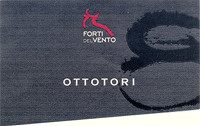
|
|
Ovada Ottotori 2008 |
|
| Forti del Vento (Piedmont, Italy) | |
| Grapes: Dolcetto | |
| Price: € 15.00 | Score: |
| Ovada Ottotori shows an intense ruby red color and nuances of ruby red, little transparency. The nose reveals intense, clean, pleasing and refined aromas which start with hints of black cherry, plum and blackberry followed by aromas of blueberry, raspberry, violet, cyclamen, mace and hints of vanilla. The mouth has good correspondence to the nose, a slightly tannic attack and however balanced by alcohol, good body, intense flavors, agreeable. The finish is persistent with flavors of black cherry, plum and blackberry. Ovada Ottotori ages for one year in cask. | |
| Food Match: Cold cuts, Pasta with meat and mushrooms, Sauteed meat | |
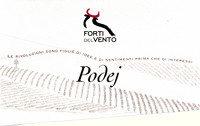
|
|
Barbera del Monferrato Podej 2008 |
|
| Forti del Vento (Piedmont, Italy) | |
| Grapes: Barbera | |
| Price: € 15.00 | Score: |
| Barbera del Monferrato Podej shows an intense ruby red color and nuances of ruby red, little transparency. The nose denotes intense, clean, pleasing and refined aromas which start with hints of cherry, raspberry and violet followed by aromas of plum, blueberry, tobacco, carob, cinnamon and hints of vanilla. The mouth has good correspondence to the nose, a slightly tannic attack and however balanced by alcohol, good body, intense flavors, pleasing crispness. The finish is persistent with flavors of cherry, raspberry and plum. Barbera del Monferrato Podej ages for 12 months in cask. | |
| Food Match: Broiled meat and barbecue, Stewed meat with mushrooms, Stuffed pasta | |

|
|
Morellino di Scansano Riserva 2007 |
|
| Moris Farms (Tuscany, Italy) | |
| Grapes: Sangiovese (90%), Cabernet Sauvignon, Merlot (10%) | |
| Price: € 18.00 | Score: |
| This Morellino di Scansano Riserva shows an intense ruby red color and nuances of ruby red, little transparency. The nose denotes intense, clean, pleasing and refined aromas that start with hints of black cherry, plum and violet followed by aromas of black currant, blueberry, tobacco, vanilla, cocoa, mace and eucalyptus. The mouth has good correspondence to the nose, a tannic attack and however balanced by alcohol, good body, intense flavors, pleasing roundness. The finish is persistent with flavors of black cherry, plum and black currant. This Morellino di Scansano Riserva ages in barrique for 12 months followed by 6 months of aging in bottle. | |
| Food Match: Broiled meat and barbecue, Roasted meat, Stewed and braised meat, Hard cheese | |
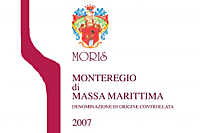
|
|
Monteregio di Massa Marittima 2007 |
|
| Moris Farms (Tuscany, Italy) | |
| Grapes: Sangiovese (90%), Cabernet Sauvignon (10%) | |
| Price: € 12.50 | Score: |
| Monteregio di Massa Marittima shows a brilliant ruby red color and nuances of garnet red, little transparency. The nose reveals intense, clean, pleasing and refined aromas which start with hints of black cherry, plum and violet followed by aromas of blueberry, blackberry, black currant, carnation, chocolate and vanilla. The mouth has good correspondence to the nose, a slightly tannic attack and however balanced by alcohol, good body, intense flavors, agreeable. The finish is persistent with flavors of black cherry, plum and black currant. The finish is persistent with flavors of black cherry, plum and black currant. Monteregio di Massa Marittima ages for 12 months in barrique. | |
| Food Match: Broiled meat and barbecue, Braised and stewed meat with mushrooms, Roasted meat | |
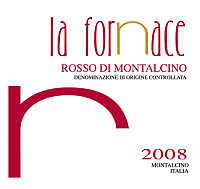
|
|
Rosso di Montalcino 2008 |
|
| La Fornace (Tuscany, Italy) | |
| Grapes: Sangiovese | |
| Price: € 11.00 | Score: |
| This Rosso di Montalcino shows a brilliant ruby red color and nuances of garnet red, moderate transparency. The nose reveals intense, clean, pleasing and refined aromas which start with hints of black cherry, plum and violet followed by aromas of blueberry, blackberry, raspberry, vanilla, tobacco and cinnamon. The mouth has good correspondence to the nose, a tannic attack and however balanced by alcohol, good body, intense flavors, agreeable. The finish is persistent with flavors of black cherry, plum and blackberry. This Rosso di Montalcino ages in cask for 13 months. | |
| Food Match: Roasted meat, Broiled meat and barbecue, Braised and stewed meat, Hard cheese | |
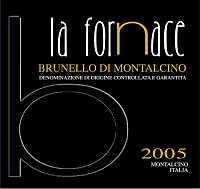
|
|
Brunello di Montalcino 2005 |
|
| La Fornace (Tuscany, Italy) | |
| Grapes: Sangiovese | |
| Price: € 28.00 | Score: |
| This Brunello di Montalcino shows a brilliant ruby red color and nuances of garnet red, moderate transparency. The nose reveals intense, clean, pleasing, refined and elegant aromas which start with hints of black cherry, plum and violet followed by aromas of blueberry, blackberry, vanilla, tobacco, rose, chocolate, cinnamon, mace and menthol. The mouth has good correspondence to the nose, a tannic attack and however balanced by alcohol, full body, intense flavors, pleasing crispness. The finish is persistent with flavors of black cherry, plum and blueberry. This Brunello di Montalcino ages in cask and in barrique for 36 months followed by at least 6 months of aging in bottle. | |
| Food Match: Game, Roasted meat, Stewed and braised meat, Hard cheese | |
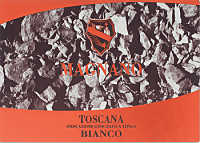
|
|
Magnano 2009 |
|
| Buccia Nera (Tuscany, Italy) | |
| Grapes: Chardonnay | |
| Price: € 9.00 | Score: |
| Magnano shows a pale golden yellow color and nuances of straw yellow, very transparent. The nose denotes intense, clean and pleasing aromas that start with hints of apple, pineapple and pear followed by aromas of hawthorn, broom and plum. The mouth has good correspondence to the nose, a crisp attack and however balanced by alcohol, good body, intense flavors, pleasing roundness. The finish is persistent with flavors of apple, pineapple and plum. Magnano ages for 3 months in steel tanks followed by 4 months of aging in bottle. | |
| Food Match: Pasta and risotto with fish and vegetables, Vegetable soups, Sauteed fish | |
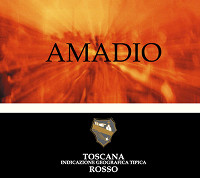
|
|
Amadio 2007 |
|
| Buccia Nera (Tuscany, Italy) | |
| Grapes: Sangiovese, Merlot | |
| Price: € 16.00 | Score: |
| Amadio shows an intense ruby red color and nuances of garnet red, moderate transparency. The nose denotes intense, clean and pleasing aromas which start with hints of plum, black cherry and black currant followed by aromas of blackberry, violet, carob and vanilla. The mouth has good correspondence to the nose, a slightly tannic attack and however balanced by alcohol, good body, intense flavors, pleasing roundness. The finish is persistent with flavors of black cherry, blackberry and black currant. Amadio ages for about 20 months in cask followed by 6 months of aging in bottle. | |
| Food Match: Stuffed pasta, Roasted meat, Stewed meat with mushrooms | |
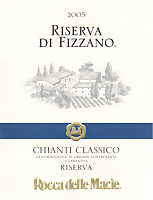
|
|
Chianti Classico Riserva di Fizzano 2005 |
|
| Rocca delle Macie (Tuscany, Italy) | |
| Grapes: Sangiovese (85%), Cabernet Sauvignon (10%), Merlot (5%) | |
| Price: € 23.00 | Score: |
| Chianti Classico Riserva di Fizzano shows an intense ruby red color and nuances of garnet red, little transparency. The nose denotes intense, clean, pleasing and refined aromas which start with hints of plum, black cherry and black currant followed bu aromas of violet, blueberry, vanilla, chocolate, tobacco, cherry macerated in alcohol, mace and menthol. The mouth has good correspondence to the nose, a tannic attack and however balanced by alcohol, good body, intense flavors, pleasing roundness. The finish is persistent with flavors of plum, black cherry and black currant. Chianti Classico Riserva di Fizzano ages in barrique for some months followed by 12 months of aging in bottle. | |
| Food Match: Roasted meat, Stewed and braised meat, Hard cheese | |
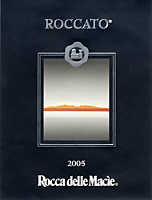
|
|
Chianti Classico Riserva di Fizzano 2005 |
|
| Rocca delle Macie (Tuscany, Italy) | |
| Grapes: Sangiovese (50%), Cabernet Sauvignon (50%) | |
| Price: € 36.00 | Score: |
| Chianti Classico Riserva di Fizzano shows an intense ruby red color and nuances of garnet red, little transparency. The nose denotes intense, clean, pleasing and refined aromas which start with hints of plum, black cherry and black currant followed bu aromas of violet, blueberry, vanilla, chocolate, tobacco, cherry macerated in alcohol, mace and menthol. The mouth has good correspondence to the nose, a tannic attack and however balanced by alcohol, good body, intense flavors, pleasing roundness. The finish is persistent with flavors of plum, black cherry and black currant. Chianti Classico Riserva di Fizzano ages in barrique for some months followed by 12 months of aging in bottle. | |
| Food Match: Roasted meat, Stewed and braised meat, Hard cheese | |
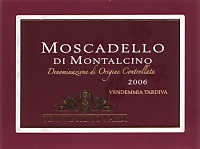
|
|
Moscadello di Montalcino 2007 |
|
| Tenute Silvio Nardi (Tuscany, Italy) | |
| Grapes: Muscat Blanc | |
| Price: € 20.00 - 50cl | Score: |
| This Moscadello di Montalcino shows a brilliant golden yellow color and nuances of golden yellow, transparent. The nose reveals intense, clean, pleasing and refined aromas that start with hints of grape, dried apricot and citrus fruit peel followed by aromas of lychee, peach jam, candied fruits, honey, lavender, sage, almond and vanilla. The mouth has good correspondence to the nose, a sweet attack and however balanced by alcohol, good body, intense flavors, pleasing roundness. The finish is persistent with flavors of grape, dried apricot and honey. This Moscadello di Montalcino ages for 6 months in barrique. | |
| Food Match: Fruit tarts, Confectionery | |
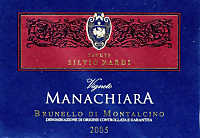
|
|
Brunello di Montalcino Vigneto Manachiara 2005 |
|
| Tenute Silvio Nardi (Tuscany, Italy) | |
| Grapes: Sangiovese | |
| Price: € 45.00 | Score: |
| Brunello di Montalcino Vigneto Manachiara shows a brilliant ruby red color and nuances of brick red, moderate transparency. The nose reveals intense, clean, pleasing, refined and elegant aromas that start with hints of black cherry, plum and violet followed by aromas of blueberry, blackberry, raspberry, vanilla, tobacco, pink pepper, chocolate, cinnamon and menthol. The mouth has good correspondence to the nose, a tannic attack and however balanced by alcohol, full body, intense flavors, pleasing crispness. The finish is persistent with flavors of black cherry, plum and raspberry. Brunello di Montalcino Vigneto Manachiara ages for 12 months in barrique, 12 months in cask and for more than one year in bottle. | |
| Food Match: Game, Roasted meat, Braised and stewed meat, Hard cheese | |
News |
|
In this section are published news and information about events concerning the world of wine and food. Whoever is interested in publishing this kind of information can send us a mail to our address.
|
AquavitaeReview of Grappa, Distillates and Brandy |
|
|
| Distillates are rated according to DiWineTaste's evaluation method. Please see score legend in the "Wines of the Month" section. |
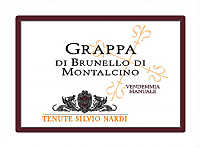
|
|
Grappa di Brunello di Montalcino |
|
| Tenute Silvio Nardi (Tuscany, Italy) | |
| (Distiller: Distillerie Colessi) | |
| Raw matter: Pomace of Sangiovese | |
| Price: € 15.00 - 50cl | Score: |
| This grappa is colorless, limpid and crystalline. The nose reveals intense, clean and pleasing aromas of black cherry, blackberry, violet, plum, raspberry and hazelnut, with almost imperceptible pungency. In the mouth has intense flavors with perceptible alcohol pungency which tends to dissolve rapidly, good correspondence to the nose, balanced sweetness, pleasing roundness. The finish is persistent with flavors of black cherry, plum and blackberry. This grappa is distilled with a batch alembic still. Alcohol 42%. | |
Wine Parade |
|
|
| The best 15 wines according to DiWineTaste's readers. To express your best three wines send us an E-mail or fill in the form available at our WEB site. |
| Rank | Wine, Producer | |
|---|---|---|
| 1 |
| Aglianico del Vulture Il Repertorio 2006, Cantine del Notaio (Italy) |
| 2 |
| Brunello di Montalcino Progetto Prime Donne 2004, Donatella Cinelli Colombini (Italy) |
| 3 |
| Trento Brut Riserva Methius 2004, Dorigati (Italy) |
| 4 |
| Barolo Bussia 2001, Prunotto (Italy) |
| 5 |
| Chianti Classico Riserva 2005, Capannelle (Italy) |
| 6 |
| Sangiovese di Romagna Superiore Riserva Thea 2005, Tre Monti (Italy) |
| 7 |
| Soave Motto Piane 2008, Fattori (Italy) |
| 8 |
| Aglianico del Vulture La Firma 2004, Cantine del Notaio (Italy) |
| 9 |
| Arkezia Muffo di San Sisto 2004, Fazi Battaglia (Italy) |
| 10 |
| Sagrantino di Montefalco Passito 2004, Adanti (Italy) |
| 11 |
| Confini 2007, Lis Neris (Italy) |
| 12 |
| Blanc des Rosis 2006, Schiopetto (Italy) |
| 13 |
| Brunello di Montalcino Vigneto Manachiara 2005, Tenute Silvio Nardi (Italy) |
| 14 |
| Barolo Sorano 2004, Alario (Italy) |
| 15 |
| Barolo Cannubi Boschis 2005, Sandrone (Italy) |
| |||||||
Privacy Policy | |||||||


| Copyright © 2002-2024 Antonello Biancalana, DiWineTaste - All rights reserved |
| All rights reserved under international copyright conventions. No part of this publication and of this WEB site may be
reproduced or utilized in any form or by any means, electronic or mechanical, without permission in writing from DiWineTaste. |